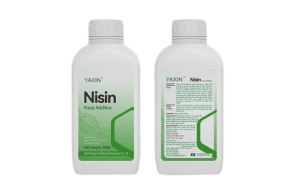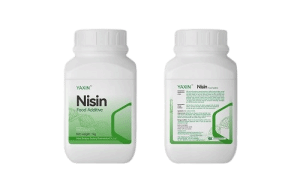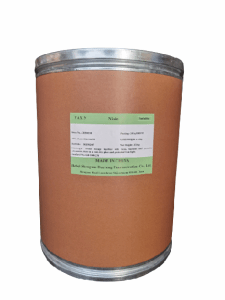
 CONTACT
CONTACT
- Linkman:Linda Yao
- Tel: +8618231198596
- Email:linda.yao@dcpharma.cn
- Linkman:CHARLES.WANG
- Department:Overseas
- Tel: 0086 0311-85537378 0086 0311-85539701
Natamycin Raw Material Supplier, Stability & Effectiveness
TIME:2025-03-03The stability and effectiveness of natamycin-lactose preparations vary under different pH values. The following is a detailed analysis:
I. Stability
·Acidic Environment (pH < 7): Generally speaking, natamycin-lactose preparations exhibit good stability in a relatively acidic environment. When the pH value is around 4 to 6, the chemical structure of natamycin is relatively stable, and the degradation rate is slow. Under such acidic conditions, some chemical bonds in the natamycin molecules are not easily attacked by protons to cause reactions such as bond breakage. Lactose can also maintain a relatively stable state, with fewer hydrolysis reactions occurring, and there are no obvious changes in the interaction between the two, thus maintaining the overall stability of the preparation. However, when the pH value is too low, such as pH < 3, natamycin may undergo some chemical reactions with acidic substances, leading to changes in its structure. At the same time, lactose may also undergo accelerated hydrolysis, thereby reducing the stability of the preparation.
·Neutral Environment (pH ≈ 7): Under neutral pH conditions, natamycin-lactose preparations can usually maintain a certain degree of stability. At this time, there are neither excessive hydrogen ions nor excessive hydroxide ions to interfere with the chemical structures of natamycin and lactose and their interactions. However, since microorganisms grow and reproduce more easily in a neutral environment, if the storage conditions of the preparation are not appropriate, microorganisms may use lactose as a carbon source for growth, thus affecting the stability of the preparation. As a result, the content of natamycin may also change due to the action of microorganisms.
·Alkaline Environment (pH > 7): As the pH value rises into the alkaline range, the stability of natamycin-lactose preparations is likely to decrease. At a higher pH value, certain chemical bonds in its molecules may be attacked by hydroxide ions, resulting in reactions such as hydrolysis, which leads to the destruction of its structure and a decrease in its activity. Meanwhile, alkaline conditions may also promote the isomerization of lactose or other chemical reactions, affecting the physical and chemical properties of the preparation and making the preparation less stable. When the pH value exceeds 9, the degradation rate of natamycin may significantly accelerate, and the stability of the preparation is severely affected.
II. Effectiveness
·Acidic Environment (pH < 7): Under acidic conditions, natamycin-lactose preparations have a good inhibitory effect on some acid-tolerant molds and yeasts. For example, in food systems with a pH of 4 to 6, such as yogurt and fruit juice, natamycin can effectively inhibit the growth of common molds and yeasts, prevent food spoilage, and extend the shelf life of food. This is because the acidic environment is conducive to natamycin acting on the cell membranes of microorganisms, increasing the permeability of the cell membranes, and thus inhibiting the growth and reproduction of microorganisms.
·Neutral Environment (pH ≈ 7): At a neutral pH value, natamycin-lactose preparations still possess a certain degree of antibacterial activity, but it may be slightly lower than that in an acidic environment. For some microorganisms with a wide adaptability to pH, such as certain Bacillus species, it can also play a certain inhibitory role under neutral conditions. However, compared with acidic conditions, a higher concentration may be required to achieve the same antibacterial effect.
·Alkaline Environment (pH > 7): As the pH value rises into the alkaline range, the effectiveness of natamycin-lactose preparations usually decreases. Alkaline conditions may change the molecular structure and charge properties of natamycin, reducing its binding ability to the cell membranes of microorganisms and making it difficult to exert an effective antibacterial effect. For example, in alkaline foods or environments with a pH > 8, the inhibitory effect of natamycin on common microorganisms will be significantly weakened, microorganisms will grow and reproduce more easily, and the effectiveness of the preparation will be greatly reduced.
- Tel:+8618231198596
- Whatsapp:18231198596
- Chat With Skype







